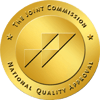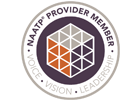Soberman's Estate was founded in honor of two men. The Soberman's Estate Founder's Brother (Jeff Prager) and his Best Friend (Jerry Josen) who committed suicide as a direct result of alcoholism. Jerry's daughter wrote the following paper. .png?width=672&height=480&name=National%20Suicide%20Prevention%20Week%20(672%20x%20480%20px).png)
I remember my mom and dad having an argument in their bedroom. My mom called my name from across the house and brought me into their bedroom. She was very angry and said to me “Your dad has something to tell you”. He didn’t speak. It was then that she told me that he had an alcohol addiction and had relapsed. I remember being confused. I was 12 at the time, and never recalled a time in my life where addiction had played a role in my dad’s life, or mine for that matter. My life changed drastically after that moment.
My dad was an Otolaryngologist (ENT physician and surgeon). I found out that he had started drinking alcohol heavily during his fellowship. His license was suspended around the time I was seven. In order to work again as a physician, he had to meet the Medical Board requirements, consisting of a 90-day inpatient rehabilitation program, followed by the attendance at 90 AA meetings in 90 days, five years of random drug and alcohol testing, and a five-year outpatient supervised program. One does not have to be an addict or a physician to see that this is a long, expensive and demanding process. How does one overcome the shame and disappointment, especially as a well-respected physician? I obviously do not remember this time clearly because I was young. My dad was sober for five years until the time of his relapse when I was 12 years old.
After that night, I began to keep a vigilant watch on his behaviors and mannerisms. I started to observe behaviors which, I now know, are typical amongst addicts. At night, when my mom went to work, I became a detective, searching for hidden alcohol around the house and in his car. I could tell when my dad was impaired. He had a blank expression on his face and a delayed response. He slurred his words and denied taking anything. Deny, deny, deny. This become a frequent occurrence. My dad did things that he would never have done in his sober state of mind, such as driving under the influence. I knew this was not my dad, it was whatever was in his system adversely affecting his judgement. I knew my dad for 12 years. This irresponsible behavior was not typical of the man I knew. I know that if he had believed he could stop and seek help, he would have, but he felt unable to do so. As a physician, he was understandably scared of the consequences he would face of coming out about his addiction, especially since he had already gone through the process once.
Eight years have passed since my father’s suicide. Because of my experience, I wanted to learn about addiction in order to help individuals suffering from the condition as well as the affected loved ones. To begin, addiction should be defined. According to the American Psychiatric Association, addiction is “a complex condition, a brain disease that is manifested by compulsive substance use despite harmful consequences.” (Parekh, 2017). Addiction can lead to permanent brain changes, and eventually people with addiction can build up a tolerance to the drug or alcohol. Surges of dopamine in the reward circuit of the brains of people who take drugs cause reinforcement of pleasurable behaviors such as taking drugs, again and again (NIDA, 2020). The first time someone takes drugs is usually a choice, but over time the effects on the brain from prolonged substance abuse compromises a person’s ability to choose. Changes in the brain resulting from drug use can persist long after someone has stopped taking drugs and because of this, many people in recovery may relapse. Thus, treatment must be monitored continuously to prevent relapse.
What are the consequences of addiction?
The consequences of addiction are vast for both the individual and society. Addiction can have health consequences, such as cancer; trauma; cardiovascular disease; permanent brain damage; death; and other mental and physical illnesses related to their lifestyle or effects of the drugs (Felman, 2018). Furthermore, addiction is often closely associated with suicide and depression; more than 90% of people who commit suicide and suffer from depression also have a substance abuse disorder (Juergens, 2020). Addiction and substance abuse actually increase the severity of depressive episodes and greatly increase the likelihood of suicide, despite the temporary relief and escape the substance may provide. Addiction can damage familial and professional relationships, as well as impact an individual’s judgement and behavior, exacerbating the risk of suicide. Specifically, opioid addiction is likely to result in suicide. In 2015, over 33,000 Americans died from opioids, however it is hard to determine whether these deaths were accidental or intentional (Juergens, 2020). Opioid use is associated with 40-60% increased likelihood of suicidal thoughts and a 75% increased likelihood of suicide attempt (Juergens, 2020.)
There are many health consequences related to heavy alcohol use. The short-term health risks of heavy alcohol use include injuries (motor vehicle accidents, drownings, falls), alcohol poisoning, risky sexual behaviors, miscarriage, suicide and homicide (CDC, 2019). But there are also long-term health risks including high blood pressure, heart disease, liver disease, stroke, cancer (commonly found in the liver, colon, esophagus and mouth), learning and memory problems including dementia, and mental health problems like depression and anxiety (CDC, 2019).
Addiction can also have social consequences, affecting a person’s relationship with his or her family, workplace, and community. The many dangerous consequences of addiction affect not just the person with the disease, but also the people around them. Drunk driving is a perfect example of this danger. In 2018 there were more than 10,511 fatalities in motor vehicle accidents involving blood alcohol concentrations of 0.08 g/dL or higher (NHTSA, 2019). Alcohol-impaired accidents accounted for 29% of all traffic fatalities in 2018 (NHTSA, 2019). An average of one alcohol-impaired driving fatality occurred every 50 minutes in 2018 (NHTSA, 2019). Not only is driving while impaired dangerous for the driver and any passengers, but also pedestrians and other drivers on the road who are at risk of being hit. In addition to motor-vehicle crashes, alcohol can increase the risk of sexual assault. It is estimated that each year, 696,000 students between the ages of 18 and 24 are assaulted by another student who has been drinking (NIH, 2020).
Why are we dealing with an addiction crisis nationally?
It is clear that there has been a rise in opioid addiction and overdoses in the last few years, largely due to the misuse and addiction of prescription pain relievers, heroin and synthetic opioids such as fentanyl (National Institute on Drug Abuse, 2020). This is due to the surge in healthcare providers prescribing opioids in the 1990s, ultimately leading to a widespread misuse of these medications, which are highly addictive. In 2017, there were more than 47,000 Americans who died from an opioid overdose, and 1.7 million people in the United States suffered from opioid substance abuse (National Institute on Drug Abuse, 2020). Along with opioids, alcohol is another large contributor to preventable deaths in the United States with an estimated 88,000 people dying annually from alcohol-related causes, making it the third leading preventable cause of death (NIH, 2020).
Generally speaking, there are social and legal determinants that contribute to untreated addiction and overdoses. Specifically, the criminalization and stigma surrounding drugs and alcohol has made it difficult to medicalize the problem. The criminalization of drugs in the United States may cause more harm than good. The enforcement of drug possession laws can cause extensive consequences to individuals, resulting in imprisonment, the separation of families, welfare assistance, and exposing those to discrimination and stigma for life (Human Rights Watch, 2016). Criminalization tends to drive people who use drugs underground, making it less likely they will seek treatment and more likely they will engage in unsafe practices that make them vulnerable to overdoses or infections like HIV or Hepatitis (Human Rights Watch, 2016). The role of criminalization of drugs may play a role in the addiction crisis we are dealing with now, especially the high numbers of overdoses and suicides. The criminalization of drugs leads to the stigma that people with addiction are to blame for their disease and are viewed as a “moral failure”.
An interesting model to examine the effects of the decriminalization of drugs is in Portugal, where drugs were decriminalized in 2001. By eliminating the threat of criminal penalties, and along with it the stigma, it became easier for people to seek treatment (Bajekal, 2018). One expert on the panel advocating for legalization of drugs in Portugal said, “It made much more sense for us to treat drug addicts as patients who needed help, not as criminals” (Bajekal, 2018). The per capita social cost of drug misuse in Portugal after the decriminalization of drugs decreased by 18% and the percentage of people in prison in Portugal for drug law violations decreased by 20% (Bajekal, 2018).
How can we remedy the crisis on both the individual and societal level?
As a starting point, rather than viewing drug abuse as a personal flaw or failure, addiction should be viewed from a medical standpoint as a brain illness. Addiction is a complex disorder and there are many factors that make a person susceptible to addiction, such as trauma, depression, pain and grief (Gillen, 2019). By medicalizing addiction, this can lead to reducing the stigma surrounding drug use so that addicts can seek treatment and support without feelings of shame, guilt, and anxiety. Perhaps by decriminalizing drugs and prioritizing health and safety over punishment, addicts will be more encouraged to seek help, leading to a reduction in the number of drug and alcohol related deaths. One out of every four deaths in the U.S. is related to tobacco, alcohol, prescription or illicit drug use, and drug mortality rates are only getting worse (Alexis, 2019). Research has found that people with a drug dependence will die around 20 years earlier than people who do not use drugs (Alexis, 2019).
Moreover, drug use and addiction awareness should be taught through education in schools, communities, and in the media. Teaching parents, teachers, and students the risks of drug use through programs like D.A.R.E. America (DARE, 2020) is a start, but also educating people about the biological mechanism of addiction may help destigmatize addiction. Perhaps the chemical pathways of addiction in the brain can be taught in science or psychology classes at an earlier age and a more basic level. In the community, perceived stigma in hospitals and doctors’ offices can discourage people from accessing needed healthcare services. Many nurses and ED doctors carry a bias against people with drug dependency, and this can affect the healthcare providers’ willingness to treat the patient for substance abuse and prevent addicted individuals from seeking treatment altogether (Villa, 2019). This is a missed opportunity for Emergency Medicine doctors to intervene effectively in helping those with addiction because of their own bias against addiction. More ways to reduce the stigma surrounding drug abuse can include offering compassionate support, listening without holding judgement, and seeing a person for who they are, and not the drugs they use (Villa, 2019). Treating people with dignity and compassion who are suffering is a step in the right direction.
Social media influences drug use in younger populations by providing an opportunity for marketing and display of risky behaviors of drugs and alcohol. Media platforms such as Instagram and Snapchat provide an environment where kids are exposed to famous and normal people engaging in risky behaviors like drinking and smoking (Hilliard, 2019). Seeing celebrities engage in drinking or using marijuana influences kids watching these posts by normalizing these behaviors. This causes teenagers to also want to engage in the “cool” behaviors that are being modeled by celebrities. A study found that frequent social media users were five times more likely to buy cigarettes, three times more likely to drink and two times as likely to use marijuana than infrequent users of social media (Hilliard, 2019). Social media can also serve as a catalyst for mental health problems as people compare themselves to others and may face cyberbullying (Hilliard, 2019). Monitoring social media use and educating young kids on the influence social media can have on participating in risky behavior is necessary. Also, by limiting advertisements of alcohol and drugs on social media, these substances will not be normalized and in turn, influence young adolescents to engage in drug and alcohol use.
Because addiction is complex, treatment is multifaceted including behavioral therapy, medications and group therapy. Some treatments focus directly on the individual’s drug use while others focus on restoring the addicted individual to be a productive member in society. Alcoholics anonymous (AA) and Narcotics Anonymous (NA) are two well-known treatment approaches for recovering addicts. There is some controversy whether these programs are effective, partly because treatment success largely depends on participation and attendance of regular meetings. If people don’t adhere to the structure of the program, they won’t receive the full benefits of the program (Wagener, 2020). Some sources say that the success rate of AA is around 12%. An AA book claims a 50% success rate and that 75% of its members stay abstinent (Wagener, 2020).
To make things more complex, there may be co-occurring disorders. In 2017, 8.5 million American adults suffered both from mental health disorder and a substance use disorder (Thomas, 2020). The relapse rate for substance use disorder is estimated to be between 40% and 60% (NIDA, 2020). Clearly with relapse rates this high, this issue is much larger than a moral failure or lack of personal discipline, but rather a societal problem. Something is wrong. From failing to properly train medical professionals about addiction recovery to treating addicts as criminals rather than patients in need of help, our healthcare system is failing these patients. Addiction is treatable, although it is hard to overcome and does need to be monitored continuously to avoid relapse rates that are this high.
Lastly, I wanted to focus on addiction in the medical community. Physicians and nurses are an at-risk demographic accounting for one of the highest rates of addiction compared to other occupations (Juergens, 2018). This could be in part due to the high levels of stress, unpredictable work hours, easy access to prescription medications, or the mental toll they face from working with challenging patients and making tough clinical decisions. According to the Journal of Clinical Nursing, approximately 20 percent of all nurses struggle with an addiction to drugs or alcohol and one in ten physicians fall into drug or alcohol abuse at some point in their lives.
(Juergens, 2018). For the medical community, physicians should be given the opportunity to receive treatment under confidentiality agreements without fear of losing their medical license as long as they are receiving care. Some programs, such as physician health programs (PHPs), allow physicians to seek treatment anonymously. Physicians should be monitored during and after treatment to try to prevent relapse. In jobs with high levels of stress and trauma (physicians, firefighters, EMTs), employers should offer counseling or therapy sessions to employees to help find effective ways of coping with stress. An addicted medical professional is not only putting their own health at risk, but the wellbeing of their patients. Thus, figuring out how to help those in medical professions to seek treatment is essential, but should be done in a way that ensures they don’t lose everything they have worked for. In my dad’s case, not only did he lose his job, but he also had to pay tens of thousands of dollars for the 90-day inpatient stay, followed by thousands of dollars every month for five years. A suggestion might be for the medical and nursing boards to collect annual donations from their members to help offset the cost of treatment for the professionals suffering from addiction.
Growing up with a father who suffered from addiction and died from it changed the way I view the world. For a long time, I got upset when my mom drank any alcohol. While some of my friends drank, I chose not to participate out of fear of having an addictive personality like my dad. As I have matured, I realize some of these ideas are irrational, but nonetheless, these views have shaped who I am. I have grown into a stronger person from this experience. My father’s death touched many people. His friend from medical school switched his medical specialty to Addiction Medicine shortly following my father’s death. Another friend of his founded a sober treatment center for recovering male alcoholics. Addiction goes far beyond the individual. It affects family members and friends. To this day, strangers ask me if my father was Jerry Josen and when I say yes, they will fondly say he was their doctor, or maybe even that he saved their lives. Addiction did not define him or the positive influence he had on many lives in his community. People are not all good or all bad. Understanding a medicalized paradigm has helped me move through my own process of recovery from my father’s addiction and suicide. Unfortunately, it is too late for him, but it does not have to be this way for the millions of others who are fighting this illness today.
Soberman's Estate is a residential men's addiction treatment center that provides discreet, individualized, sophisticated recovery and wellness services for adult men that want to recover from substance use disorders, and or other behavioral issues such as trauma, anxiety, depression, stress, or other addictions.
References
Alexis, I. (Ed.). (2019, February 26). Drug Addiction Mortality Rates (Risk of Death). Retrieved August 10, 2020, from https://www.rehabcenter.net/addiction-mortality-rates/
Bajekal, N. (2018, August 01). Want to Win the War on Drugs? Portugal Might Have the Answer. Retrieved from https://time.com/longform/portugal-drug-use-decriminalization/
- (2019, December 30). Drinking too much alcohol can harm your health. Learn the facts. Retrieved August 09, 2020, from https://www.cdc.gov/alcohol/fact-sheets/alcohol-use.htm
DARE (2020). D.A.R.E . Retrieved August 09, 2020, from https://dare.org/
Felman, A. (2018, October 26). Addiction: Complications and consequences (V. Saripalli, Ed.). Retrieved August 07, 2020, from https://www.medicalnewstoday.com/articles/323461
Gillen, J. (2019, September 2). Why Is Drug Abuse A Social Problem? Retrieved August 09, 2020, from https://oceanrecoverycentre.com/2019/09/why-is-drug-abuse-a-social-problem/
Hilliard, J. (2019, July 16). The Influence of Social Media on Teen Drug Use. Retrieved August 09, 2020, from https://www.addictioncenter.com/community/social-media-teen-drug-use/
Human Rights Watch. (2016, October 12). US: Disastrous Toll of Criminalizing Drug Use. Retrieved August 08, 2020, from https://www.hrw.org/news/2016/10/12/us-disastrous-toll-criminalizing-drug-use
Juergens, J. (2020, June 18). Addiction and Suicide. Retrieved August 09, 2020, from https://www.addictioncenter.com/addiction/addiction-and-suicide/
Juergens, J. (2020, June 18). Addiction in Medical Professionals. Retrieved from https://www.addictioncenter.com/addiction/medical-professionals/
National Institute on Drug Abuse. (2020, June 10). Opioid Overdose Crisis. Retrieved August 08, 2020, from https://www.drugabuse.gov/drug-topics/opioids/opioid-overdose-crisis
NIDA. 2020, July 24. Treatment Approaches for Drug Addiction DrugFacts. Retrieved from
https://www.drugabuse.gov/publications/drugfacts/treatment-approaches-drug-addiction on 2020, August 8
NIDA. (2020, June 19). Understanding Drug Use and Addiction DrugFacts. Retrieved from
https://www.drugabuse.gov/publications/drugfacts/understanding-drug-use-addiction on 2020, August 6
NIH. (2020, February 18). Alcohol Facts and Statistics. Retrieved August 08, 2020, from https://www.niaaa.nih.gov/publications/brochures-and-fact-sheets/alcohol-facts-and-statistics
NHTSA. (2019, December). Alcohol-Impaired Driving, 2018 Data. Retrieved August 07, 2020, from https://crashstats.nhtsa.dot.gov/
Parekh, R. (Ed.). (2017, January). What is addiction? Retrieved August 07, 2020, from https://www.psychiatry.org/patients-families/addiction/what-is-addiction
Thomas, S. (2020, June 1). Addiction Statistics: Drug & Substance Abuse Statistics. Retrieved from https://americanaddictioncenters.org/rehab-guide/addiction-statistics
Villa, L. (2019, February 20). Stigma of Addiction: Reducing the Stigma of Substance Abuse. Retrieved August 08, 2020, from https://drugabuse.com/addiction/stigma/
Wagener, D. (2020, May 19). What Is the Success Rate of AA? Retrieved August 09, 2020, from https://americanaddictioncenters.org/rehab-guide/12-step/whats-the-success-rate-of-aa





